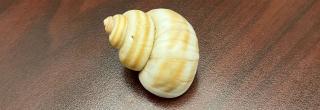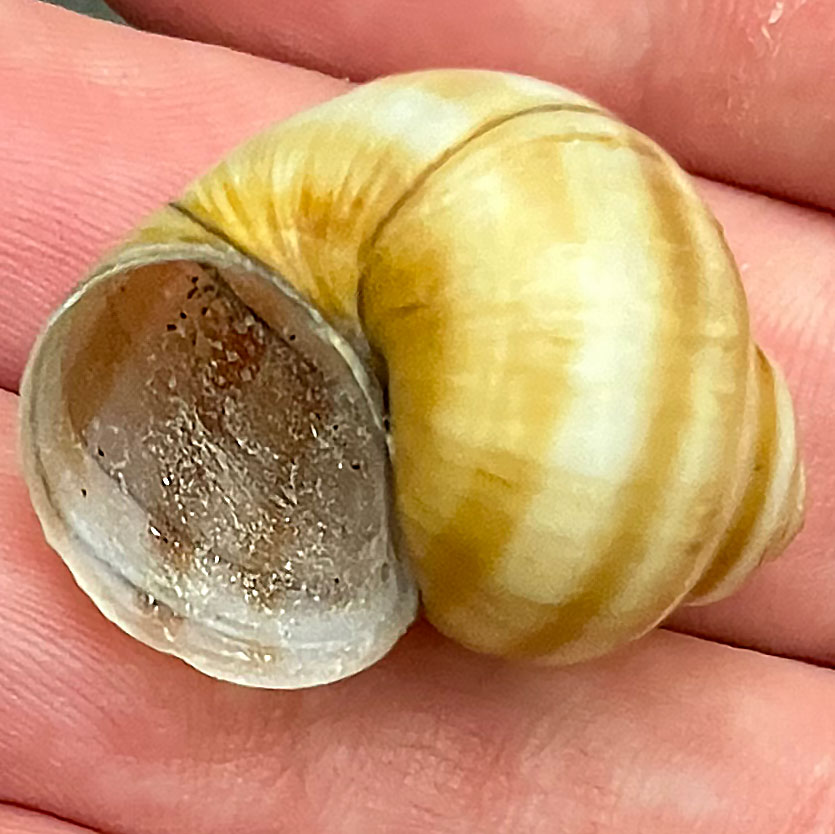
Banded Mystery Snail
Scientific Name | (Viviparus georgianus) |
|---|---|
Classification and Permitting Level | |
Species Description | Commonly yellow-green to light brown in color with four dark brown bands (not always present), 3-5 body whorls, opens to the right, and has an operculum. Banded mystery snails can grow up to an inch and a half in length. |
Preferred Habitat | Low-flow shallow regions of lakes, rivers, and streams. Prefers silty, soft, sand, or rocky bottoms. |
Reason for ANS Designation | Can accumulate sizeable densities. Found to feed on fish eggs. Highly resistant to drying out, making long overland travel on boats feasible. Carry parasites that have led to sizeable avian die-offs. Large die-offs snails can litter shorelines with undesirable sharp and smelly shells. |
Place of Origin | Native to southeastern and Midwest United States. New populations became established in the early 1900s from intentional aquarium releases. |
Stopping the Spread | The spread of banded mystery snails is primarily through aquarium releases and the transport of adults. When taking equipment out of a lake or stream, inspect it to ensure there is no aquatic vegetation. Snails may attach themselves to vegetation. Properly dispose of aquarium organisms by freezing them for 24 hours before discarding. |
Additional Information |


